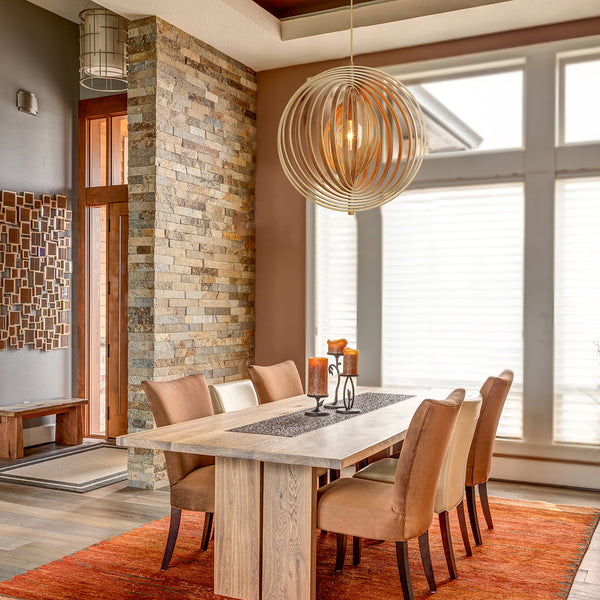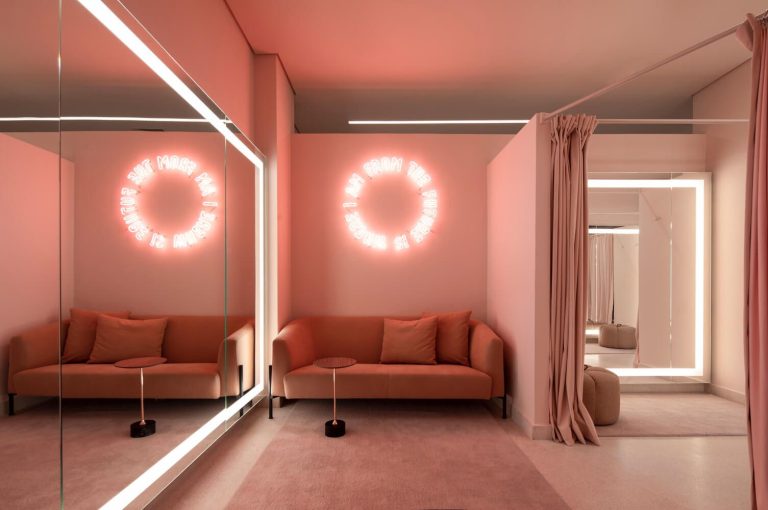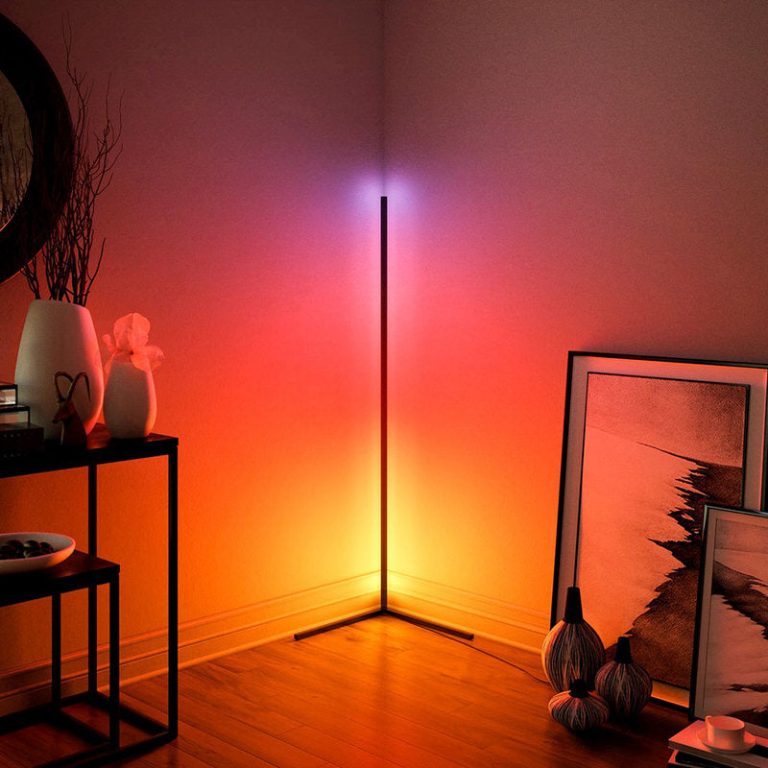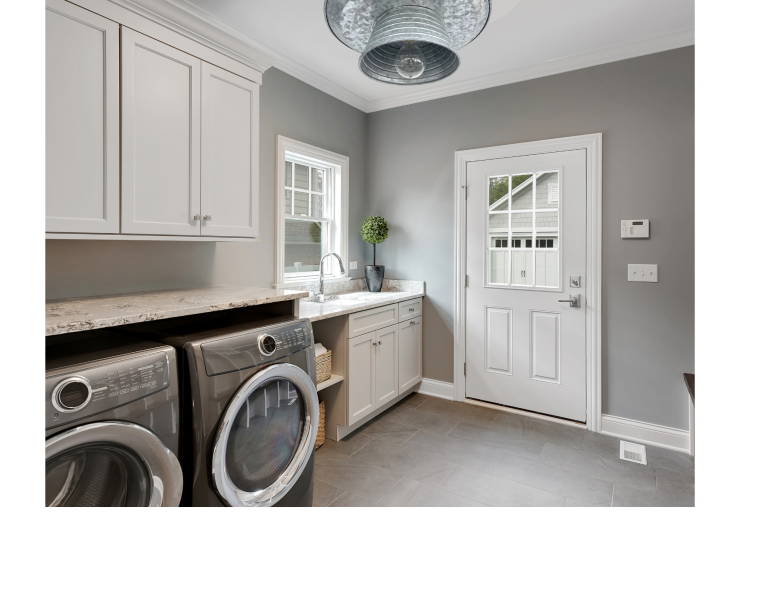How Big Light Fixture for Room? Optimize Your Space
How big light fixture for room? To choose the right light fixture size, add the room’s length and width in feet. Convert that total to inches for the ideal fixture diameter. For example, a 12×14 ft room = 26 inches. This works best for central fixtures like chandeliers or pendants in living rooms, dining rooms, or bedrooms.
It’s not just about aesthetics; it’s about creating the perfect ambiance and functionality. Imagine walking into a room where the lighting feels just right, enhancing every element, from the color of the walls to the mood of the space. You deserve a room that feels comfortable and inviting, and the size of your light fixture plays a crucial role in achieving that.
Get ready to discover how the right light fixture size can illuminate your space perfectly, making it feel just right for you. Dive into the details, and let’s shed some light on how you can make your room shine.
How Big Light Fixture for Room?
Choosing The Right Size
Selecting the right light fixture size transforms a room’s look and feel. Consider the room’s dimensions and purpose to find a fixture that balances style and functionality. A well-chosen fixture brightens the space without overwhelming it.
Choosing the right size for a light fixture is crucial to both the aesthetic and functional aspects of a room. The perfect fixture doesn’t just illuminate; it sets the mood and creates a harmonious space. But how do you determine the ideal size? Let’s dive into some practical tips and insights that will help you make the best choice for your space.
Measure Your Room Dimensions
Start with the basics: measure your room. Knowing the length, width, and height gives you a clear picture of the space you’re working with. A general rule of thumb is to add the length and width of the room in feet; this number should be approximately the diameter in inches of your light fixture. For example, if your room is 10 feet by 12 feet, aim for a fixture that is about 22 inches in diameter. This ensures that your fixture neither overwhelms nor underwhelms the space.
Consider Ceiling Height
Ceiling height plays a significant role in determining fixture size. In rooms with high ceilings, larger fixtures can make a bold statement, while low ceilings benefit from more compact designs. If your ceiling is higher than 8 feet, consider adding 3 inches to the fixture’s diameter for each additional foot of ceiling height. This helps maintain balance and ensures the fixture complements the room’s vertical space.
Think About Furniture Placement
Your furniture arrangement influences fixture size. A chandelier over a dining table, for example, should be about half to three-quarters the width of the table. This creates a visually appealing ratio and ensures balanced light distribution. Similarly, if placing a fixture in a living room, consider the seating arrangement. You wouldn’t want a fixture that’s too small to light the area or too large that it overpowers the furniture.
Personal Style And Preferences
While guidelines are helpful, your personal style matters. If you love oversized fixtures, ensure they have adequate space to shine without crowding the room. On the other hand, if minimalist designs appeal to you, opt for fixtures that offer subtlety and sophistication without skimping on functionality.
Test Before Committing
Try using a mock-up or paper template before purchasing. This visual aid helps you see how the fixture will look in your room. It’s a simple yet effective way to avoid size mishaps. Ask yourself: Does it enhance the room’s design? Does it provide sufficient light? Testing can save you from costly mistakes. Choosing the right size fixture is not just about following rules—it’s about creating a space that feels right. Are you ready to find the perfect light for your room? Let these insights guide you to a decision you’ll love.

Credit: www.lampsexpo.com
Measuring Your Space
Determining the right size light fixture enhances your room’s charm. Consider the room’s dimensions and ceiling height. A well-sized fixture balances the space and complements the decor.
Choosing the right light fixture size for your room can dramatically enhance its ambiance and functionality. It’s not just about style; it’s about ensuring the fixture fits the space perfectly. The first crucial step is measuring your space accurately. This process helps you understand the dimensions you’re working with and guides you in selecting the ideal fixture size.
Understanding Room Dimensions
Begin by measuring the length and width of your room. Add these two numbers together to determine the ideal diameter for your fixture in inches. For example, if your room is 12 feet by 14 feet, a fixture with a diameter of about 26 inches would be a good fit. This method ensures your light fixture complements the room without overpowering it.
Considering Ceiling Height
Ceiling height significantly affects fixture selection. Standard ceilings, typically 8 feet high, require different considerations than vaulted or higher ceilings. If your ceiling is taller, a fixture with a longer drop or chain might be appropriate to fill the vertical space. Always ensure there is at least 7 feet of clearance between the floor and the bottom of the fixture to prevent any head-bumping incidents.
Functional Zones In Your Room
Think about the functional zones within your room. Do you have a reading nook, a dining area, or perhaps a workspace? Each zone might require a different lighting approach. For example, a smaller pendant light could work well over a cozy reading chair, whereas a larger chandelier might be perfect for the dining area. Tailor your light fixture size to the specific needs of each space.
Personal Experience: A Lesson In Measuring
I once underestimated the importance of measuring and ended up with a fixture too small for my living room. It looked lost and failed to provide adequate lighting. That experience taught me to always double-check dimensions and visualize how the fixture will fit into the room’s layout. Have you ever bought something that looked perfect in the store but was all wrong at home?
Visualizing Your Light Fixture
Use painter’s tape to outline the fixture’s dimensions on your ceiling. This quick trick can help you visualize the size before making a purchase. It’s a simple way to ensure that the fixture will harmonize with your room’s proportions. You might be surprised how much this step can influence your decision. Remember, the right light fixture does more than illuminate your space; it enhances your room’s overall aesthetic and functionality. By taking the time to measure carefully, you ensure that your choice will brighten your home in more ways than one.
Factors To Consider
Choosing the right light fixture size depends on room dimensions, ceiling height, and purpose. Consider room style and lighting needs. A well-sized fixture balances aesthetics and function, enhancing the room’s ambiance.
When deciding on the right size light fixture for a room, it’s not just about making sure it fits. The fixture should harmonize with your space, complementing the room’s design while providing adequate lighting. Several factors come into play, and understanding them can make all the difference. Let’s dive into these considerations to help you make the best choice.
Room Size
The size of your room is the first thing to consider. Bigger rooms generally require larger fixtures to provide sufficient light. Measure the room’s dimensions and use the sum of the room’s length and width (in feet) as a guide for the fixture diameter in inches. For example, a room that is 10 feet by 12 feet might benefit from a fixture around 22 inches in diameter. This ensures that your light fixture is proportionate to your space.
Ceiling Height
Ceiling height is another crucial factor. A fixture that hangs too low in a room with an 8-foot ceiling could make the space feel cramped. Conversely, a small fixture in a room with a high ceiling may not provide enough light. To avoid this, calculate the ideal hanging height. Generally, there should be at least 7 feet of clearance below the fixture. For taller ceilings, consider a fixture with an adjustable chain or rod.
Purpose Of The Room
Consider what the room will be used for. A dining room may need a statement chandelier that draws the eye and creates ambiance. A home office, however, might require functional lighting that reduces eye strain. Think about how you use the space and choose a fixture that supports that purpose. Is it a cozy reading nook or a bustling family kitchen? Each space has its own needs.
Style And Design
The light fixture should match the room’s decor. A modern light fixture might look out of place in a traditionally styled room. Think about the colors, materials, and overall aesthetic of your space. When I redecorated my living room, I chose a rustic chandelier that echoed the wooden beams above. It brought the whole room together, creating a cohesive look that felt intentional.
Budget
Your budget will influence your options. Light fixtures can range from affordable to extravagant. Set a budget beforehand to avoid overspending. Shop around and compare prices. Sometimes you’ll find a hidden gem that fits your style and budget perfectly. Remember, the right fixture can elevate your room without breaking the bank.
Installation
Installation might seem trivial, but it’s important. A complex fixture with intricate wiring may require professional help. Consider your ability to install it yourself or factor in the cost of hiring someone. Safety is key. Ensure that the installation is secure to prevent accidents. A beautiful light fixture isn’t worth risking your safety. Choosing the right light fixture involves more than just picking something pretty. It’s about balancing size, height, purpose, and style within your budget. As you explore your options, remember to consider these factors to light up your home perfectly.

Credit: grahamsliving.com
Balancing Style And Function
Choosing the right light fixture is key to balancing style and function. Consider the room size and ceiling height. A large fixture can dominate a small space, while a small one might get lost in a bigger room.
Balancing style and function in a room’s lighting can transform your space into a harmonious blend of aesthetics and practicality. The right light fixture can set the mood and highlight your room’s best features. It’s not just about illumination; it’s about creating a focal point that complements your decor while serving its purpose efficiently. Choosing the perfect light fixture size is crucial in achieving this balance.
Understanding Room Dimensions
Before purchasing a light fixture, consider your room’s size. A small fixture in a large room might look out of place, while an oversized one can overwhelm a compact area. Measure your room to understand the scale you’re working with. A simple formula is to add the room’s length and width in feet to get the fixture’s diameter in inches. For example, a 10×12 foot room might suit a 22-inch wide fixture.
Choosing The Right Style
Think about your room’s decor style. Is it modern, traditional, or eclectic? Your light fixture should enhance this style, not clash with it. A sleek, minimalist fixture can complement a modern aesthetic, while a chandelier might suit a traditional space. If you’re unsure, browse design magazines or online platforms for inspiration. Bring your room’s personality to life with a fixture that speaks to its theme.
Considering Functionality
What purpose will the light fixture serve in your room? If it’s a task light over a kitchen island or desk, focus on fixtures that offer direct, bright light. For ambient lighting in a living room, a fixture with a dimming option can add versatility. Think about how you use the space and choose a fixture that meets those needs. This approach ensures your lighting is not only stylish but also practical.
Placement And Installation
Where you place your fixture can affect both style and function. Hanging a pendant light too low can obstruct views, while positioning it too high might not provide adequate lighting. Ensure it hangs at a comfortable height, around 7 feet from the floor for most spaces. If you’re unsure, consult with a professional to get the placement just right. Proper installation can enhance the fixture’s impact and utility.
Personal Experience: Finding The Perfect Balance
I once chose an oversized chandelier for my dining room, drawn by its beauty. However, it dominated the space and made the room feel cramped. After swapping it for a simpler fixture that matched the room’s dimensions, the space felt more balanced and inviting. This taught me the importance of considering both style and function. Have you ever faced a similar dilemma? Balancing these elements can truly transform your living space. Balancing style and function in your lighting choices can elevate your room’s design. By considering room dimensions, style, functionality, and placement, you can choose a light fixture that perfectly complements your space. What will your next lighting choice say about your room?
Common Mistakes To Avoid
Choosing the right light fixture size for a room can be tricky. Many make the mistake of picking one that’s too big or too small. This can throw off the room’s balance and lighting. Always measure your space and consider scale to avoid these common pitfalls.
Choosing the right light fixture for your room is crucial. A perfect fixture can enhance your space, while a wrong choice might lead to disappointment. Let’s talk about the common mistakes to avoid when selecting a light fixture size. By steering clear of these pitfalls, you can ensure your room shines with the right brilliance. 1. Ignoring Room DimensionsMany people forget to consider their room’s dimensions. Measure your space carefully. A large fixture in a small room can overwhelm, while a tiny fixture might get lost in a big space. Visualize how the fixture will fit within your room’s proportions. 2. Overlooking Ceiling HeightCeiling height is often neglected. If your ceiling is too low, a hanging fixture could become a hazard. In rooms with tall ceilings, a flush mount might look insignificant. Ensure you account for ceiling height to avoid these issues. 3. Skipping Style ConsiderationStyle matters. You don’t want a modern fixture in a vintage-themed room or vice versa. Think about your room’s decor. Your fixture should complement the style, not clash with it. A friend once installed a sleek chandelier in a rustic room, and it looked completely out of place. 4. Neglecting Light OutputLight output is key. A fixture that looks beautiful but doesn’t provide enough light is not practical. Consider how much light you need. Use lumens as a guide, not just wattage. Balance aesthetics with functionality. 5. Disregarding Installation ChallengesInstallation challenges are real. A fixture that’s too heavy or complex might be difficult to install. Think about the installation process. If it seems daunting, you might need professional help. Are you ready to take on that challenge? 6. Underestimating Budget ConstraintsBudget constraints can be tricky. It’s easy to fall in love with a fixture out of your price range. Set a budget before you start shopping. Stick to it. Remember, a beautiful fixture doesn’t have to be expensive. When selecting a light fixture, keep these mistakes in mind. They can help guide you to a better choice. What other factors do you consider when choosing a light fixture for your room?

Credit: grahamsliving.com
Frequently Asked Questions
What Size Light Fixture Suits A Small Room?
For small rooms, choose fixtures around 12-18 inches wide. This provides ample light without overwhelming the space. Balance is key.
How Do I Measure For A Light Fixture?
Measure the room’s width and length. Add the numbers to determine the fixture diameter in inches. This ensures proper scale.
Does Ceiling Height Affect Fixture Size?
Yes, higher ceilings allow larger fixtures. Lower ceilings need smaller ones to avoid crowding. Consider proportion and space.
Conclusion
Choosing the right light fixture size is important. It affects your room’s feel and function. Measure your space first. Consider the room’s height and width. A fixture too big or small can disrupt harmony. Balance is key. Think about the room’s purpose.
Bedrooms need softer light, while kitchens need brightness. Style matters too. Match the fixture with your room’s design. Experiment with different shapes and designs. Always aim for a fixture that complements your space. With these tips, you’ll find the perfect light fixture for your room.
Related Article







